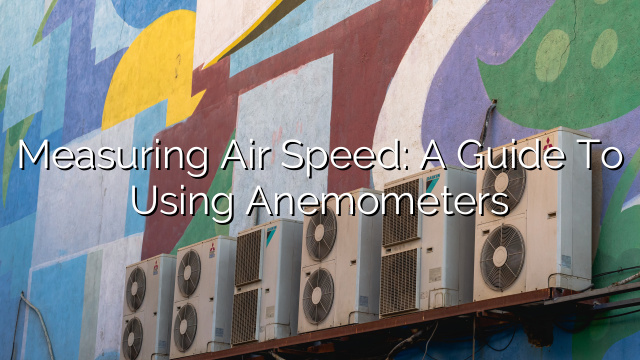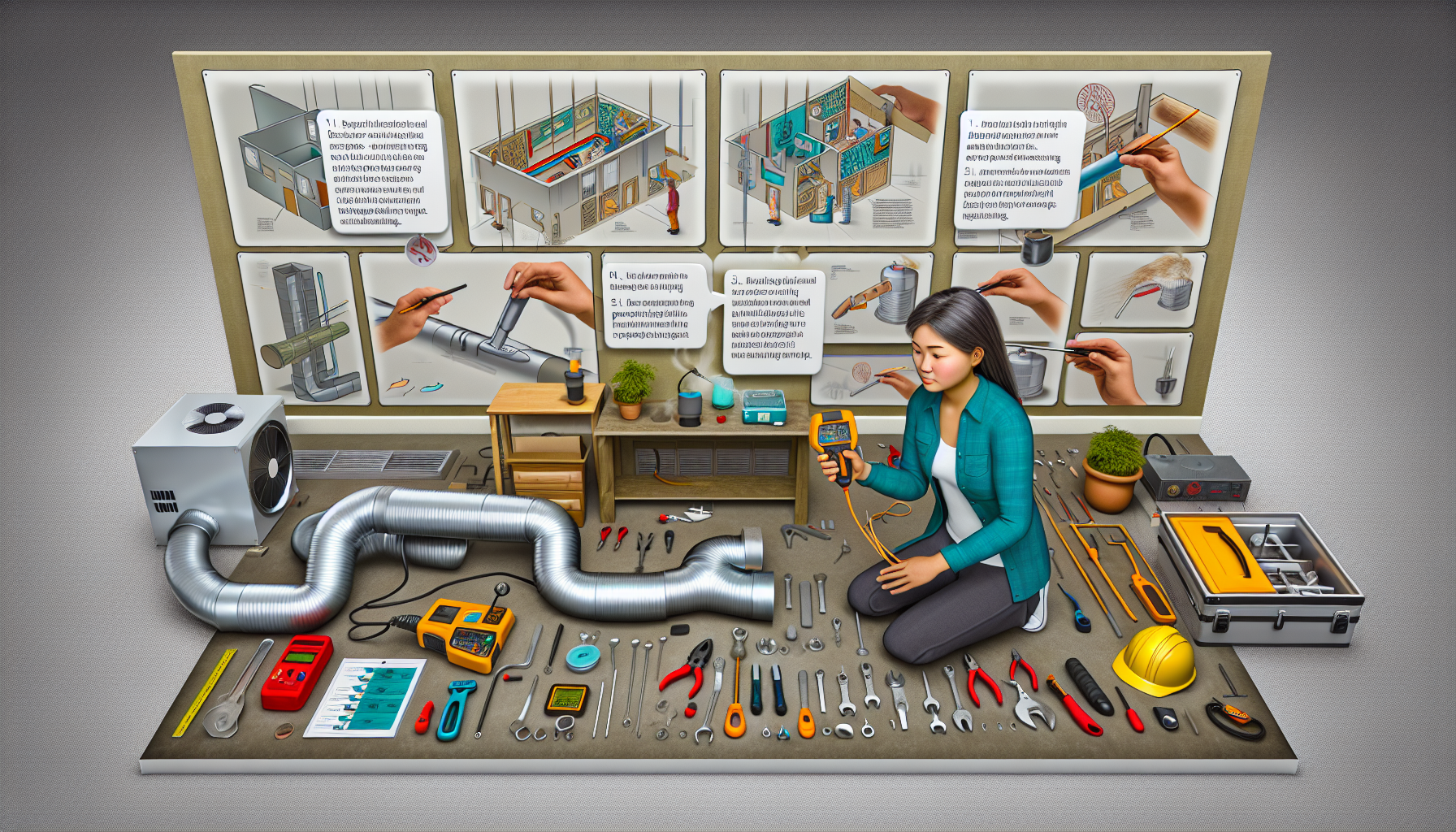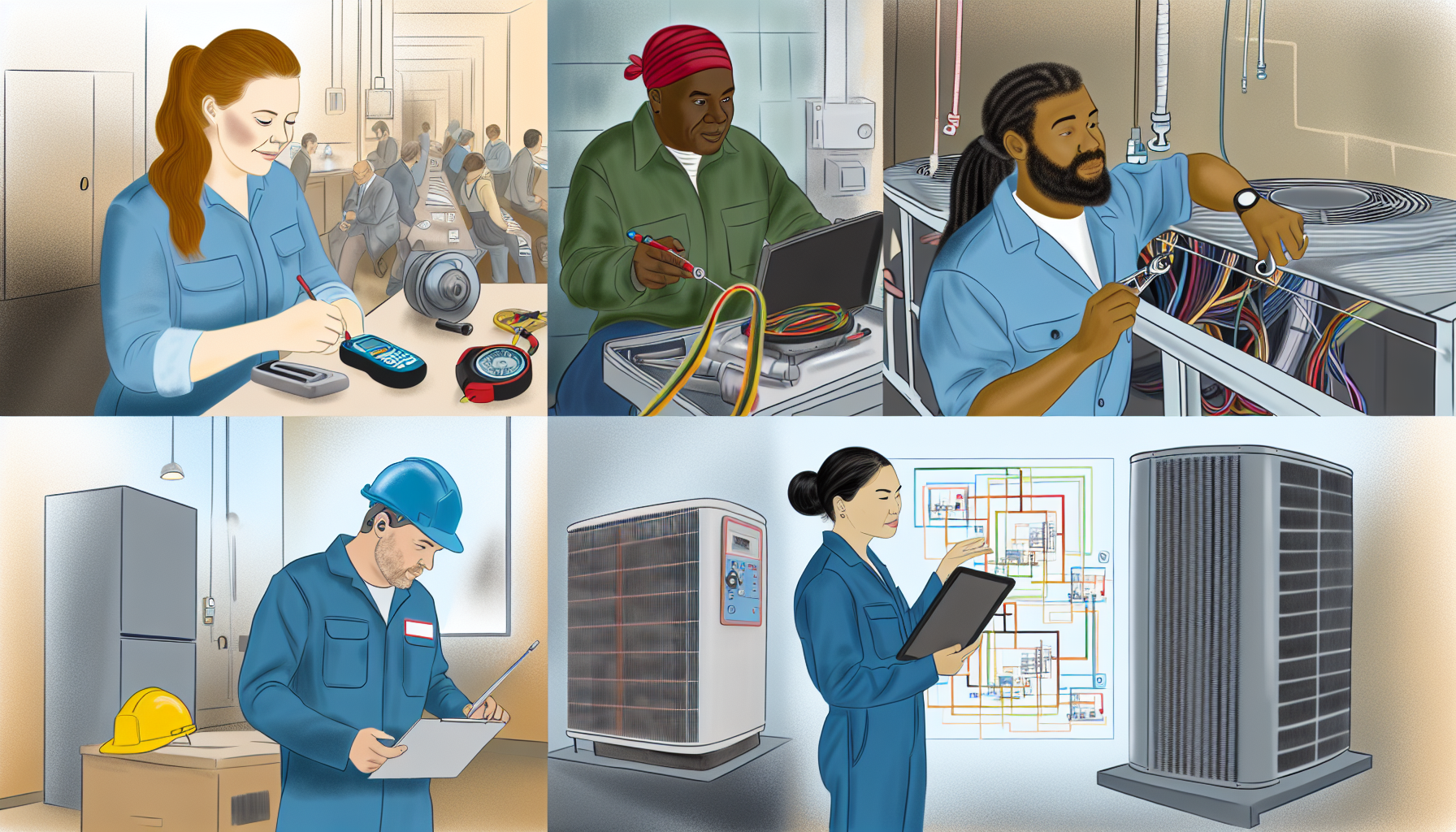Introduction
Anemometers are important tools for HVAC professionals when it comes to measuring air speed. Whether you’re working on a residential or commercial HVAC system, understanding how to use an anemometer correctly is vital for ensuring proper airflow and system efficiency. In this guide, we will explore the different types of anemometers available, the importance of measuring air speed, and the step-by-step process of using an anemometer effectively.
Types of Anemometers
- Vane Anemometers: This type of anemometer uses a rotating vane to measure air velocity. It is a versatile tool that can provide accurate measurements in various HVAC applications.
- Hot Wire Anemometers: These anemometers are designed to measure low air speeds and are commonly used in HVAC systems. They work by heating a thin wire and cooling it with the surrounding air, providing accurate measurements of air velocity.
- Pitot Tube Anemometers: This type of anemometer measures air pressure directly and calculates air velocity based on the difference in pressure between the two tubes of the pitot tube. It is commonly used in HVAC ductwork.
- Thermal Anemometers: These anemometers measure air velocity by using a heated element and detecting the change in temperature as the air flows over it. They are typically used for low-speed air measurements.
- Airflow Hoods: Airflow hoods are handheld devices that measure both air velocity and air volume. They are often used in HVAC commissioning and balancing.
The Importance of Measuring Air Speed
Measuring air speed is crucial for maintaining optimal airflow in HVAC systems. Proper air distribution plays a significant role in system performance, energy efficiency, and occupant comfort. Here are a few reasons why measuring air speed is important:
- Energy Efficiency: When the airflow is too low, HVAC systems have to work harder to maintain the desired temperature, resulting in increased energy consumption and higher utility bills. On the other hand, excessive air velocity can lead to unnecessary pressure drops and energy wastage.
- System Performance: Inadequate airflow can lead to improper temperature distribution, hot and cold spots, and reduced system performance. By measuring air speed, HVAC professionals can identify airflow issues and make necessary adjustments to optimize system performance.
- Comfort: Proper airflow ensures consistent comfort levels throughout a space. By measuring air speed, HVAC professionals can identify areas with low or high air velocity and make adjustments to enhance occupant comfort.
- Air Quality: Proper air distribution helps in maintaining good indoor air quality. By measuring air speed, HVAC professionals can ensure that air pollutants and contaminants are effectively removed from the space, reducing the risk of health issues.
Using an Anemometer: Step-by-Step Guide
Now that we understand the importance of measuring air speed let’s go through the step-by-step process of using an anemometer effectively:
- Choose the Right Anemometer: Select the appropriate anemometer based on your specific HVAC application and the desired accuracy of the measurements.
- Read the Instruction Manual: Before using an anemometer, carefully read the instruction manual provided by the manufacturer. This will help you understand the specific features and functions of the anemometer you are working with.
- Calibrate the Anemometer: It is essential to calibrate the anemometer before using it to ensure accurate measurements. Follow the calibration instructions provided by the manufacturer to properly calibrate the anemometer.
- Select an Appropriate Location: Choose a suitable location in the HVAC system to measure air velocity. This can be near a supply or return grille, or in the ductwork itself.
- Hold the Anemometer Correctly: Hold the anemometer in a way that allows the airflow to pass through it without any obstructions. Make sure your hands or any other objects do not block the airflow entering the anemometer.
- Stabilize the Anemometer: Allow the anemometer readings to stabilize before taking measurements. This will ensure that you get accurate and consistent results.
- Take Multiple Measurements: To ensure accuracy, take multiple measurements at various locations and average the results. This will help account for any variations in airflow within the HVAC system.
- Record and Analyze the Measurements: Record the measurements obtained from the anemometer and analyze the data to identify any airflow issues or areas for improvement in the HVAC system.
- Make Necessary Adjustments: Based on your analysis, make any necessary adjustments to the HVAC system to optimize airflow and improve system performance.
Frequently Asked Questions (FAQs)
Q: Can I use any type of anemometer for HVAC applications?
Answer: No, it is important to choose the appropriate type of anemometer for your specific HVAC application. Vane anemometers are versatile and suitable for most HVAC applications, but there are other specialized anemometers available for specific purposes such as measuring low air speeds or air pressure.
Q: How often should I calibrate my anemometer?
Answer: It is recommended to calibrate anemometers regularly, especially if they are used frequently or if you notice any inconsistencies in the measurements. Follow the manufacturer’s recommendations for calibration frequency or consult a professional calibration service.
Q: Can I measure air velocity without using an anemometer?
Answer: While anemometers are the most accurate and reliable tools for measuring air velocity, there are alternative methods such as using airflow hoods or other anemometer substitutes. However, these methods may not provide the same level of accuracy and reliability as anemometers.
Q: How can I improve airflow in my HVAC system?
Answer: If you identify airflow issues in your HVAC system, there are several steps you can take to improve airflow. These include cleaning or replacing air filters, adjusting dampers, sealing ductwork, and balancing air distribution by adjusting supply and return registers.
Q: Can I use an anemometer to measure air velocity in outdoor environments?
Answer: Anemometers are primarily designed for indoor use. Outdoor measurements can be affected by factors such as wind direction and intensity, which may introduce inaccuracies in the measurements. It is best to use specific anemometers designed for outdoor applications if accurate measurements are required.
Conclusion
Measuring air speed with anemometers is an essential task for HVAC professionals. By understanding the different types of anemometers available, the importance of measuring air speed, and the step-by-step process of using an anemometer effectively, you can ensure optimal airflow, system efficiency, and occupant comfort in HVAC systems. Remember to choose the right anemometer for your specific application, calibrate it regularly, and take multiple measurements for accurate results. By doing so, you can optimize the performance of HVAC systems and provide a comfortable and healthy indoor environment.








